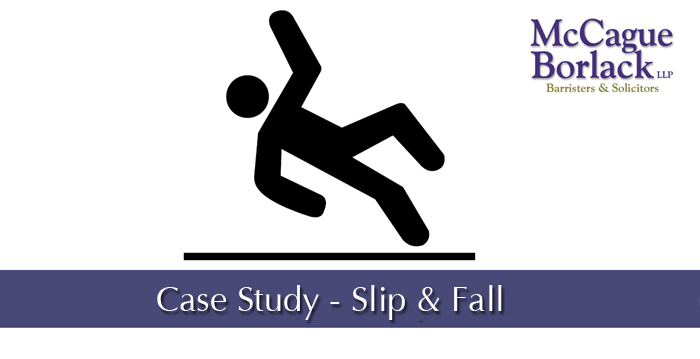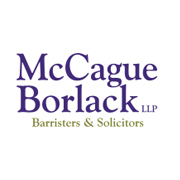Introduction
In a recent Court of Appeal decision, the Court upheld the defendant occupiers' successful summary judgment motion in a trip-and-fall case. Despite the plaintiff having expert evidence stating an unsafe elevation in the floor caused him to fall, the Court of Appeal relied on the evidence of the defendant's witness and held that the defendants had “discharged their burden as occupiers to take reasonable steps to ensure that the premises were reasonably safe”.1 Therefore, not only did the court not find any reversible error, the court went on to say that the motion judge correctly found there was no genuine issue for trial.
Facts
On June 19, 2013, the plaintiff was employed as a truck driver and attended the defendant's plant in Longford Mills, Ontario to pick up a trailer load for delivery. As he attempted to collect the load, he alleges that he fell on uneven ground and fractured his left ankle.
Importantly, the plaintiff never reported the fall to anyone on the scene nor were there any witnesses. In fact, the defendants only received notice of the accident when served with the Statement of Claim at the end of the two-year limitation period on June 18, 2015. Therefore, the first opportunity the defendants had to learn of the exact location and precise description of the fall was at examinations for discovery, which only occurred nearly four years after the accident. As a result, neither party was able to photograph or investigate the location contemporaneously with the accident.
The defendant occupiers brought a motion for summary judgment based upon the facts described above, despite the fact that the plaintiff had expert engineering evidence to suggest that negligence caused the plaintiff's injury.
Motion Judge's Decision
...if the court is satisfied that there is no genuine issue requiring a trial with respect to a claim or defence. |
According to the Rules of Civil Procedure,2 summary judgment should be granted “if the court is satisfied that there is no genuine issue requiring a trial with respect to a claim or defence”. Before making that determination, the motion judge should consider whether the evidence before the court allows the judge to make the necessary findings of fact and apply the law to the facts in a proportionate means to achieve a just result.
In this case, there was no suggestion that any further evidence would have been presented at trial. Thus, the judge was confident that he had all the necessary evidence to fairly resolve the dispute.
The basis of the plaintiff's claim against the defendants was that they owed a duty of care to him based on the provisions of the Occupiers' Liability Act.3 Even though it was the defendants who had the burden of proving why summary judgment should be granted, the case law is clear that the party responding to the motion (in this case, the plaintiff) bears the onus to “lead trump or risk losing” and to put “their best foot forward”. Therefore, to succeed in litigating an OLA claim, the plaintiff must establish some negligent act or failure to act on the part of the occupier that caused the plaintiff's injury.
In this case, however, there was very limited evidence. In support of his case, the plaintiff produced a forensic engineer for discovery. This engineer produced a report based on his attendance at the site of the alleged fall roughly five years after the accident. Included in the report were photographs taken of the area where the plaintiff indicated he fell.
On the other hand, the defendants produced an affidavit from the production supervisor, who stated that no company records contained any details of the incident. He also highlighted that in 2013, the parking lot was regularly monitored for hazards by himself and a supervisor, and that no records indicated any deficiencies around the location of the alleged fall.
... the standard is one of reasonableness, not perfection. |
The judge, in this case, was clear that “the duty of care of an occupier does not include a requirement that every conceivable hazard be removed, rather the standard is one of reasonableness, not perfection”.4 The motion judge goes on to say that “falls occur on stairs found everywhere without anybody being responsible for what is just an accident.”5
Fatal to the plaintiff's case, the motion judge took issue with the plaintiff's expert report, finding that the report lacked independence. The judge stressed that the location chosen to discuss and depict in the report was solely based on information from the plaintiff:
The uncertainty of the plaintiff regarding the actual location of the fall, his failure to advise the defendants of the fact of the fall and the alleged hazard in any way until the time of service of the statement of claim some two years after the incident, the consequent inability of the defendant to determine at the time whether a hazard actually existed, the absence of any witnesses, the absence of a photographic record contemporaneous with the fall, the fact that the engineering report is based primarily on input from the plaintiff himself without any independent testing of any kind, together with the passage of time are all factors which leave me unable to find that the plaintiff has produced ‘coherent evidence with an organized set of facts showing a real issue to be tried on admissible evidence'… In other words, the plaintiff has not “led trump”.6
The judge consequently opted to rely instead on the defendants' evidence which established a reasonable system of inspection and maintenance. The motion judge held that although the plaintiff's fall caused him a great deal of pain, the judge did not ultimately believe that the plaintiff had proven that the defendants were in breach of any standard of care. Thus, summary judgment was granted in favour of the defendants.
The Appeal
On appeal, the key issue was whether the motion judge "erred by reversing the onus on the summary judgment motion, by assuming that the respondents' premises were safe in the face of his [the plaintiff's] expert's opinion about the unsafe condition of the respondents' premises".7
... chose to accept the evidence of the respondents over the expert opinion from the appellants. |
The court did not accept these submissions. The judge asserted the motion judge was correct in asserting no genuine issue requiring a trial. He asserted that he had not assumed the premises were reasonably safe, but rather chose to accept the evidence of the respondents over the expert opinion from the appellants.
Conclusion
This decision is heavily favourable to occupiers, particularly those who are sued without notice and without being afforded a chance to properly investigate the circumstances of the loss. The court placed a heavy burden on the responding party to prove that the actions or omissions of the defendant caused the accident—a burden which seems to increase as more time passes between the date of loss and the date an occupier is first placed on notice (especially if there are no contemporaneous records, such as photographs).
Overall, a very useful decision that shows summary judgment should not simply be disregarded as an option in cases where the plaintiff seemingly has expert evidence proving his or her case.
- Haley v Stepan Canada Inc., 2020 ONCA 0737at para 8.
- Rules of Civil Procedure, RRO 1990, Reg 194 at rule 20.04
- Occupiers' Liability Act, RSO 1990, c O.2,
- Haley v Stepan, 2019 ONSC 6005 at para 17; George v Covent Garden Market Corporation, 2007 ONSC 29276.
- Nandlal v. Toronto Transit Commission, 2015 ONCA 166
- Haley v Stepan, 2019 ONSC 6005 at para 19.
- Haley v Stepan Canada Inc., 2020 ONCA 0737at para 4.


